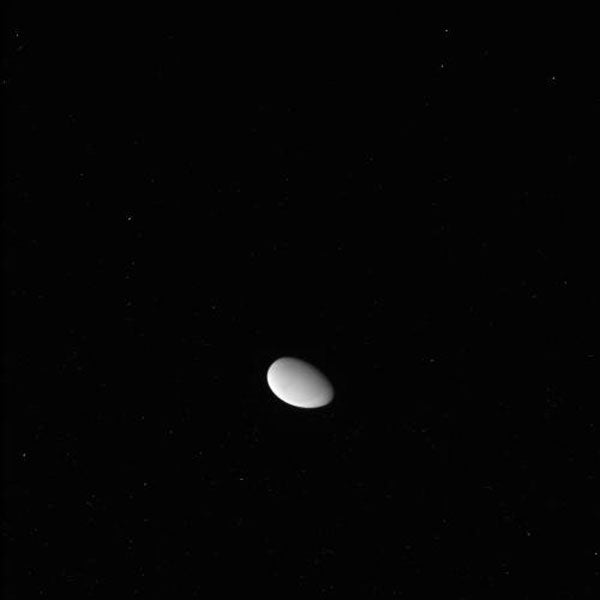Also on May 20, Cassini obtained images of Tethys, a larger Saturnian moon that is 660 miles (1,060km) across. The spacecraft flew by Tethys at a distance of about 34,000 miles (54,000km).
Cassini’s encounter with Titan, Saturn’s largest moon, on May 22 is the first of a sequence of flybys that will put the spacecraft into an inclined orbit. At closest approach, Cassini will fly within about 593 miles (955 km) of the surface of the hazy Titan. The flyby will angle Cassini’s path around Saturn by about 16° out of the equatorial plane, which is the same plane in which Saturn’s rings and most of its moons reside.
Cassini’s onboard thrusters don’t have the capability to place the spacecraft into orbits so inclined. But mission designers have planned trajectories that take advantage of the gravitational force exerted by Titan to boost Cassini into inclined orbits. Over the next few months, Cassini will use several flybys of Titan to change the angle of its inclination, building one on top of the other until Cassini is orbiting Saturn at around 62° relative to the equatorial plane in 2013. Cassini hasn’t flown in orbits this inclined since 2008, when it orbited at an angle of 74°.
This set of inclined orbits is expected to provide spectacular views of the rings and poles of Saturn. Further studies of Saturn’s other moons will have to wait until around 2015, when Cassini returns to an equatorial orbit.
“Getting Cassini into these inclined orbits is going to require the same level of navigation accuracy that the team has delivered in the past because each of these Titan flybys has to stay right on the money,” said Robert Mitchell from NASA’s Jet Propulsion Laboratory in Pasadena, California. “However, with nearly eight years of experience to rely on, there’s no doubt about their ability to pull this off.”
Cassini discovered Methone and two other small moons, Pallene and Anthe, between the orbits of Mimas and Enceladus between 2004 and 2007. The three tiny moons, called the Alkyonides group, are embedded in Saturn’s E ring, and their surfaces are sprayed by ice particles originating from the jets of water ice, water vapor, and organic compounds emanating from the south polar area of Enceladus.










